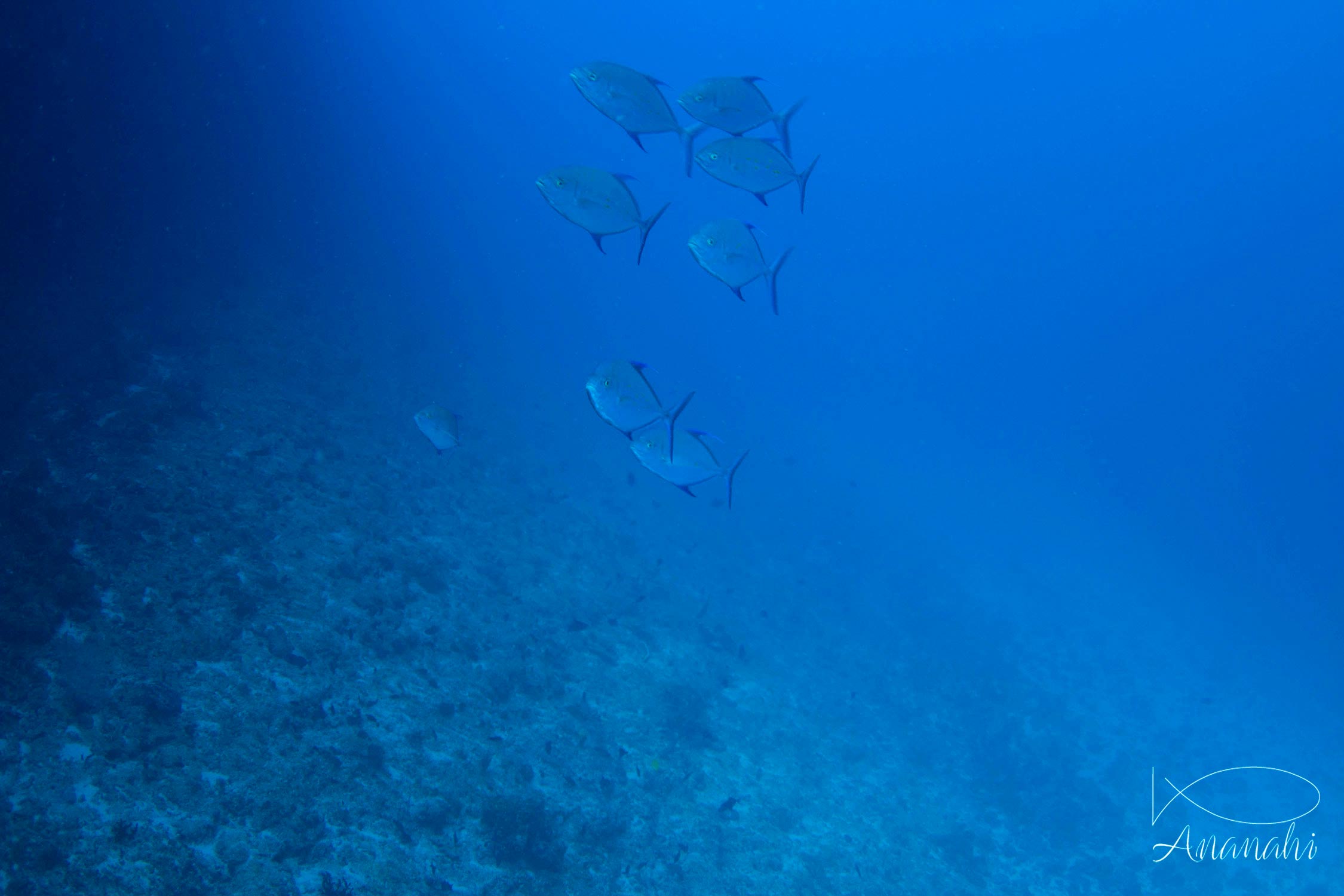
Scientific name: Caranx melampygus
Size: Up to 3.3 foot
Color: silver gray, blue, yellow, coppery green gray
Distinguishing feature: Body is silver gray, upper part coppery green gray with small dots. Blue electric fins, except the falciform pectoral fins which are yellow.
Where did we see it: Zanzibar, Mayotte, Maldives, Raja Ampat

Scientific name: Caranx melampygus
Size: Up to 3.3 foot
Color: silver gray, blue, yellow, coppery green gray
Distinguishing feature: Body is silver gray, upper part coppery green gray with small dots. Blue electric fins, except the falciform pectoral fins which are yellow.
Where did we see it: Zanzibar, Mayotte, Maldives, Raja Ampat
This trevally loves the external slopes of lagoons, rocky coral reefs or passes. She lives between the surface and 6.3 foot.
Juveniles like the shallow waters of sandy coasts or brackish waters, it is possible to see them go up the rivers.
The tiger shark has slender marks similars to the lines of tigers, hence its name.
When it is juvenile, these marks are round and not vertical. They change when it grows.
The kakihona sushi (sushi wrapped in persimmon leaves) are really the best!
To eat them, you have to go to Nara!
Some sharks can stay motionless on the sand (white tips reef sharks, nurse sharks, etc.).
These sharks don't have to swim to bring oxygen to their gills like other sharks (grey, hammerheads tc.)